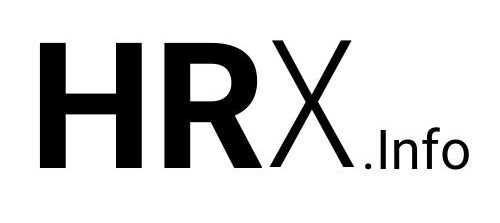A competitive salary will catch the eye of any job applicant, but the next thing they’re going to look at is the employee benefits you offer.
The traditional model of benefits packages tied exclusively to a single employer is becoming less suitable for a nontraditional workforce, particularly in today’s gig economy. Independent workers frequently change jobs, work remotely, and juggle multiple roles at once. That’s where portable worker benefits come into play. They offer a modern solution designed to keep up with the times.
In this article, we’ll explain how portable employee benefits work and what makes them different from traditional benefits.
In this blog post, you’ll learn:
- What portable benefits are.
- The importance of portable benefit programs.
- How you can offer portable health benefits to your team.
The importance of employee benefits
Before we get into the differences between portable and traditional benefits, let’s start with the importance of employee benefits. They’re key to attracting and retaining skilled employees. Generous benefits also demonstrate your commitment to their well-being and economic security.
Based on our 2024 Employee Benefits Survey, 81% of American workers said an employer’s benefits package plays a significant role in their decision to accept a job offer.
According to our survey, these are basic benefits employees look for:
- Health benefits
- Paid time off (PTO)
- Retirement plans
- Dental insurance
- Vision insurance
- Life insurance
Traditional benefits vs. portable benefits
Portable worker benefits are benefits that employees can retain and transfer when they change jobs. Unlike traditional benefits tied to a specific employer, portable benefits remain with the worker, providing financial stability and continuity regardless of employment changes.
Here’s a chart to show the difference between traditional and portable health and retirement plans.
|
Traditional benefit |
Portable benefit |
|
|
Retirement savings |
Pension plan |
401(k) |
|
Healthcare coverage |
Employer-sponsored group health insurance plan |
Health savings accounts (HSAs) and individual health insurance plans |
When you offer portable benefits for workers, you empower them. They can retain and manage their benefits independently, even when transitioning between jobs or shifting to new employers.
This makes portable benefits particularly helpful for companies with:
How to offer portable health benefits
Employees who have access to health insurance through their employer lose that coverage when they leave for other opportunities. Granted, COBRA exists to help for a short period due to involuntary coverage loss. But it’s not a promising solution long-term. This is because employees have to pay the full premium, including what the employer previously contributed, to continue coverage for a limited time.
People want financial security, especially when it comes to their healthcare. The burden of medical debt in the U.S. is heavy. According to KFF1, approximately 14 million people in the U.S. owe more than $1,000 in medical debt. About 3 million people owe more than $10,000. Without access to employer-sponsored health coverage, employees might face overwhelming medical expenses they can’t afford.
Employers can help traditional and nontraditional workers maintain coverage at all times by giving them access to individual health insurance coverage. It’s easy to do this by offering a health reimbursement arrangement (HRA) in place of a traditional group health insurance plan. You simply offer your employees a tax-free monthly allowance and reimburse them for the eligible expenses they incur.
When you offer an HRA, you can reimburse your employee for more than 200 eligible medical expenses, including:
- Dental, vision, and health insurance premiums
- Doctor visits
- Preventive care
- Emergency care
- Over-the-counter medication
- Prescription drugs
Stand-alone HRAs
Two of the most popular stand-alone HRAs for today’s modern workforce are the individual coverage HRA (ICHRA) and the qualified small employer HRA (QSEHRA). They give your employees access to benefits for the long haul.
The ICHRA offers employers the most flexibility. With no annual limits on employer contributions, you can offer your employees as much as you’d like in allowances. Additionally, you can offer different allowances to different workers using employee classes, such as full-time employees and part-time workers. Employers can also vary allowances by age and family status. To participate in the ICHRA, employees need their own individual health insurance plans.
While the ICHRA works for employers of all sizes, only small employers with fewer than 50 full-time equivalent employees (FTEs) can offer QSEHRAs. However, employees don’t need individual health insurance plans to participate in this benefit, only minimum essential coverage (MEC). This means they can still participate in the QSEHRA if they have coverage through a parent’s or spouse’s group health plan.
These tax-free HRA contributions allow employees to enroll in individual health insurance plans. While employees can’t take their HRA allowances with them when they leave an organization, they can keep their individual health plans. This helps them prevent any gaps in coverage between jobs, all without the often much higher costs of COBRA with a group plan.
HSAs
Employers can also offer their employees HSAs. Unlike stand-alone HRAs, HSAs work alongside a group high-deductible health plan (HDHP). With an HSA, both the employer and the employee can make contributions to the account to cover future medical expenses. HSAs are portable because even if the employer sets them up, the individual employees own them. While they can’t take their employer-sponsored group coverage with them if they switch jobs, they can take their HSAs.
Conclusion
Understanding portable employee benefits is crucial for today’s independent workforce. This innovative approach allows nontraditional and traditional employees to carry their benefits from one job to another, offering unprecedented flexibility and financial security in career transitions.
It’s easy to offer portable health benefits with PeopleKeep by Remodel Health. You can manage your health benefit in just minutes each month using our HRA administration platform.









